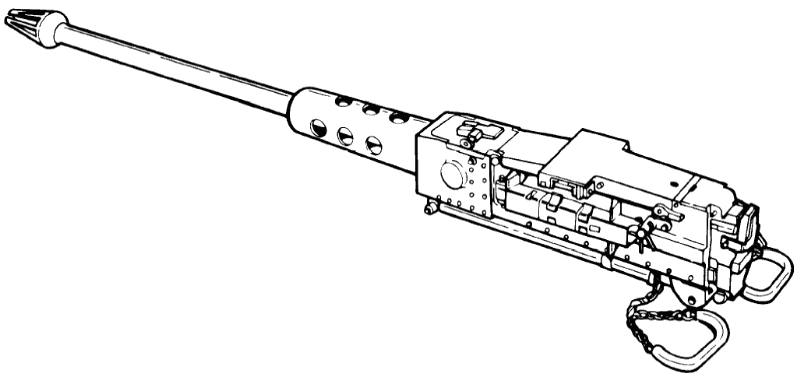|
aphid_licker posted:Doubt that competence level of nonjapanese officers with their sidearms was any higher. Did WW2 combatant nations require officers to qual with their pistols? The USMC (a regular adversary of the Japanese army) certainly did.
|
|
|
|

|
| # ? Apr 27, 2024 07:23 |
|
How often would anyone trained with a sword ever actually fight with it the way historical martial arts do? I've always assumed that with a few exceptions (classical rome i see u) anyone trained with a sword is either commanding or fighting mounted (and often with a spear and/or bow and the sword still as a sidearm), and isn't ever expecting to duel some dude on foot with it unless it's ritualized.
|
|
|
|
Edgar Allen Ho posted:How often would anyone trained with a sword ever actually fight with it the way historical martial arts do? I suspect for an infantry officer a sword was more of a useful pointer. ("The enemy are over there, boys!")
|
|
|
|
Edgar Allen Ho posted:How often would anyone trained with a sword ever actually fight with it the way historical martial arts do? I've always assumed that with a few exceptions (classical rome i see u) anyone trained with a sword is either commanding or fighting mounted (and often with a spear and/or bow and the sword still as a sidearm), and isn't ever expecting to duel some dude on foot with it unless it's ritualized. Age of sail naval combat saw a lot of sword action in addition to things such a boarding pikes and small arms.
|
|
|
aphid_licker posted:Doubt that competence level of nonjapanese officers with their sidearms was any higher. Did WW2 combatant nations require officers to qual with their pistols? It certainly is something most would be quite happy to hide under the many different broad rimmed or tri-cornered hats or other chappeu of the era.
|
|
|
|
|
KYOON GRIFFEY JR posted:i mean by the time your battalion commander is reaching for his sidearm you're pretty hosed and time spent learning to shoot a pistol is time you could spend teaching your officers to do a billion other more useful things Maybe he wants to pistol-whip a malingerer
|
|
|
|
aphid_licker posted:Maybe he wants to pistol-whip a malingerer  
|
|
|
Edgar Allen Ho posted:How often would anyone trained with a sword ever actually fight with it the way historical martial arts do? I've always assumed that with a few exceptions (classical rome i see u) anyone trained with a sword is either commanding or fighting mounted (and often with a spear and/or bow and the sword still as a sidearm), and isn't ever expecting to duel some dude on foot with it unless it's ritualized. Don't forget swords were also civilian self-defence weapons, in soceities more violent than ours. Sure, like most pistols carried in the US they'd not be used, but they were more than a weapon of war.
|
|
|
|
|
Also, swords were useful for cavalry for a long time.
|
|
|
|
Edgar Allen Ho posted:How often would anyone trained with a sword ever actually fight with it the way historical martial arts do? I've always assumed that with a few exceptions (classical rome i see u) anyone trained with a sword is either commanding or fighting mounted (and often with a spear and/or bow and the sword still as a sidearm), and isn't ever expecting to duel some dude on foot with it unless it's ritualized. Depends on era, what period are you talking about? For medieval people, sword and buckler play was a common recreational activity in England, common enough that they tried to pass laws to prevent people from doing it in the streets of London. Even in the 19th century, it was probably more common than you think, especially so in the colonies. But even in the Napoleonic wars, British officers of the grenadiers and light infantry companies found themselves mixing it up enough that they started opting to buy sabers for themselves because they felt that the infantry officer pattern spadroon wasn't a good enough fighting weapon. This was so prevalent that by 1803, they made it an official regulation pattern, the 1803 Flank Officers sword.
|
|
|
|
It's also important to distinguish between what soldiers are using during a pitched battle vs. during every day soldier poo poo. I doubt very many infantry lieutenants got much use out of their swords at Waterloo. On the other hand I can easily see a foraging party making good use of them for both intimidating the locals into giving up their food and fending off any of said locals who come back with some pitchforks. edit: also, as others have said, in close combat on the assault. Even looking at my earlier example of waterloo, s much as I doubt the lieutenants in the middle of the line were getting in their cut and thrust, the people at Hougoumont got into a lot of hand to hand.
|
|
|
|
wasn't there some British colonial adventure where officers were told to get to work on their swordsmanship before headed over?
|
|
|
|
bewbies posted:wasn't there some British colonial adventure where officers were told to get to work on their swordsmanship before headed over? India, I believe. I recall someone posted in this thread that Indian standards of swordsmanship were pretty high. Cessna posted:I suspect for an infantry officer a sword was more of a useful pointer. ("The enemy are over there, boys!") Also quite useful for telling who is an officer.
|
|
|
|
IIRC officers sent to india were often told that.
|
|
|
|
|
bewbies posted:wasn't there some British colonial adventure where officers were told to get to work on their swordsmanship before headed over? Yes, the advice from experienced India hands to younger officers preparing to head out (known as griffins once they arrived) was 1) learn to sword 2) learn Indian languages as much as possible.
|
|
|
|
Plus something about getting rid of the standard metal scabbard because it would make the sword dull iirc
|
|
|
|
aphid_licker posted:Plus something about getting rid of the standard metal scabbard because it would make the sword dull iirc Metal scabbards promote rust. You want a wooden scabbard, optionally wrapped in leather. If the outside of the scabbard is wrapped in metal except near the top where it would come in contact with the blade, it makes a dandy club at the cost of extra weight. LLSix fucked around with this message at 18:06 on Nov 11, 2020 |
|
|
|
Chamale posted:I just remembered one of the questions, from the Ancient History thread last week. I think it aligns pretty well with that you've said about pikes being good weapons: So to start off, none of these weapons (nor those posted in subsequent videos) are pikes, let alone the 16 foot pikes of the 17th century. The ones in the video look, what, 8 or 9 feet long? Not pikes even by the most generous definitions. This is important because the longer something gets the worse the leverage is and the harder it is to be precise with it. Think of writing with a pencil by holding it from the eraser end instead of the lead end. When you take that up to the scale of a 16 foot piece of wood, with the added weight that entails, you can imagine the challenges it causes. I watched this with the sound off, and skipped through to the part with the sword & shield fighting, then watched again with the sound on. What was surprising enough in its own right is that I agreed with lindybeige's assessment of the different sword & shield fighters. Some were completely inexperienced, some moreso. The latter group did very well against the spearman. But all of this is beside the point. I don't think reconstructions of this type are very useful, because as mentioned, some fighters had never used shields before, and there is no surviving treatise that shows a complete system for use of large shields, while we do have that for short polearms. This also contributes to the difficulties faced by participants using spear and shield, which from the ancient to the late medieval period was an extremely common combination, even among those who had access to swords. In other words it seems likely the ineffectiveness of the fighters had a lot more to do with unfamiliarity than an inherent deficiency in the weapon. Edit: also equipment-wise none of the kite-shaped shields had their correct strapping, which is important for how you use the shield and again highlights the flaws of this sort of reconstruction. Dance Officer posted:No. Pikes and spears are very difficult to deal with and dangerous in personal combat. Any weapon is dangerous, but pikes are not especially so. The difficulties faced by a spear wielder are accentuated by the length of the pike, while the key advantage of being able to strike outside your enemy's reach remains the same. Pikes really excel in formation and are the logical conclusion to the proliferation of body armour in the 15th century. Panzeh posted:Even a less realistic pretend scenario is a lot more informative than someone out of the blue saying 'i would simply push the spear aside and move in like a boss" It absolutely *can* be more informative but people can easily take away the wrong lessons and those are usually harder to break than the result of idle speculation. I had a conversation with a reenactor where he insisted, and could not be shaken on this, that falchions were exclusively swung in a continuous figure eight in a fight. Comically wrong. Xakura posted:Yes, as a sidearm. Bonus points for it being easy to carry on your body. The term sidearm is deceptive here. Swords spent as much or more time in use by a mounted soldier than their lance, because lances inevitably break. If you are a mid-to-late 15th century man-at-arms on foot it's true that you're more likely to use a pollaxe if you're in the open field, but you'll spend more of your time fighting on foot during a siege, where the use of ladders typically precludes the use of those polearms by assaulting forces, and narrow or spiral staircases makes them challenging even for defenders at times. Rodrigo Diaz fucked around with this message at 18:44 on Nov 11, 2020 |
|
|
|
ChubbyChecker posted:anime is bad no.
|
|
|
|
While we're on sword-talk, why did mediveal knights use straight swords over curved ones in say the 1300-1400 period, if curved is better on horseback? Harder to make?
|
|
|
|
|
Grenrow posted:Yes, the advice from experienced India hands to younger officers preparing to head out (known as griffins once they arrived) was 1) learn to sword 2) learn Indian languages as much as possible. According to the only legitimate source for such matters* British cavalry swords of the Victorian era had bad grips or something, like they were made of metal?  *: Flashman book #69: "Being colossally racist to someone-or-other"
|
|
|
|
Nothingtoseehere posted:While we're on sword-talk, why did mediveal knights use straight swords over curved ones in say the 1300-1400 period, if curved is better on horseback? Harder to make? A straight sword is better for thrusting through gaps in armor.
|
|
|
|
Nothingtoseehere posted:While we're on sword-talk, why did mediveal knights use straight swords over curved ones in say the 1300-1400 period, if curved is better on horseback? Harder to make? Wouldn't medieval knights be using polearms on horseback? Especially in that period when the jousting/tournament culture is at it's peak.
|
|
|
|
If Patton had completed his pistol qualifications he would've shot down that He-111!
|
|
|
|
Stairmaster posted:Wouldn't medieval knights be using polearms on horseback? Especially in that period when the jousting/tournament culture is at it's peak. If both of a knight's hands are on the polearm, what are they holding onto the horse with? If you want to call a lance a polearm, sure, I guess, but that's a one-handed weapon when on horseback. LLSix fucked around with this message at 20:09 on Nov 11, 2020 |
|
|
|
uhh they legs and stirrups? how do you think horse archery or shooting a long gun from a horse works
|
|
|
|
Schadenboner posted:According to the only legitimate source for such matters* British cavalry swords of the Victorian era had bad grips or something, like they were made of metal? No, grips were made of varied materials (for officer swords, they'd be sharkskin/rayskin, most likely). There were a million complaints about swords in 19th century britain, everything from the design to materials to maker was complained about. Some of this is the age-old issue of soldiers blaming equipment failures for their own lack of skill, or just overexpectations of what weapons should be able to do. If you're repeatedly parrying swords or bayonets, swinging through bone and flesh, and generally bashing your sword around in intense fighting, even a well made one is going to break sometimes. Some of them were legitimately not great designs, like the pipe-back blades of the 1820s were notorious for not being very strong. The 1845 pattern was imo very good, but obviously that's subjective. One issue people had is that while the government established an official pattern via regulation, officers bought their own weapons. So you could go to a number of retailers who would be offering swords and some were better than others. Some of the shadier tailors would try to sell you all your kit in one big package, uniforms and gear, and would cheap out by buying cut-rate swords and pistols from no-name makers. The premium brand was Wilkinson, but some people didn't have the money for that and had to make do. There are definitely accounts where some dude's Wilkinson will break and he'll be pissed off about it, but like I said, what do you expect from a metal implement you're cutting through bone and bashing on metal with? There's a lot of barracks mythology and received wisdom about X or Y pattern being good/bad/etc, not all of which is based on anything. Experienced swordsmen and good fencers would often have the pattern swords tweaked to their specifications and buy a custom blade on the regulation hilt. There's some that are like narrow rapier blades and I saw one on a sales site once that was basically a big chunky backsword looking blade on a standard 1845 pattern hilt. So my guess would be that the backsword one was probably an officer who had seen some real hand to hand combat and wanted a beefier blade.
|
|
|
|
On the sword chat, why did a lot of Napoleonic-era cavalry lose their lances and adopt swords as their primary weapons?
|
|
|
|
|
Grenrow posted:Some of this is the age-old issue of soldiers blaming equipment failures for their own lack of skill, And sometimes the gear you are issued is garbage. 
|
|
|
|
KYOON GRIFFEY JR posted:uhh they legs and stirrups? how do you think horse archery or shooting a long gun from a horse works I thought you sat on the saddle horn, have I been doing thisohdear 
|
|
|
|
I was thinking about it, but is there actual video of actual mass hand to hand combat? I'd assume if there was it would be exceedingly rare as it'd have to be after 1900 and involve two sides who for what ever reasons either couldn't use or didn't have guns as well as a guy sitting there with a camera. Just wondering if such a thing existed or is evidence on the practical parts of hand to hand combat just gonna be second hand accounts of it from people who where probably terrified as hell at the time.
|
|
|
|
Nenonen posted:I thought you sat on the saddle horn, have I been doing thisohdear Post avatar combo
|
|
|
|
Defenestrategy posted:I was thinking about it, but is there actual video of actual mass hand to hand combat? I think the closest you're going to get is video of riots, and the dynamics are obviously very different there.
|
|
|
|
Cessna posted:And sometimes the gear you are issued is garbage. I hope you didn't buy your tank's M85 at a disreputable outfitters' shop before embarking on the steamship to Saudi Arabia, Lt. Cessna! Absolute griffin move.
|
|
|
|
Defenestrategy posted:I was thinking about it, but is there actual video of actual mass hand to hand combat? I'd assume if there was it would be exceedingly rare as it'd have to be after 1900 and involve two sides who for what ever reasons either couldn't use or didn't have guns as well as a guy sitting there with a camera. Just wondering if such a thing existed or is evidence on the practical parts of hand to hand combat just gonna be second hand accounts of it from people who where probably terrified as hell at the time. Actually yes, this is just a quick search result and there is very little actual hand to hand fighting here, but there's plenty of footage akin to this. DISTURBING CONTENT WARNING! https://youtu.be/7BAbrUa7VDc In general though much of such footage isn't likely to exist. To set up an old fashioned camera in a way to capture lots of fighters going mano a mano requires a spot where you could also be taking pot shots at those fighters, and more importantly, they could be taking pot shots at you. And unless you were using a a teleobjective (very unlikely), you would be danger close anyway to get any good action on film - in real combat footage you never see the enemy except maybe a tank or plane or something big like that. Things change with tiny action cameras and drones and CCTV's but you had to have some bad luck (or special force training) to see hand to hand combat during WW2, let alone today.
|
|
|
Rodrigo Diaz posted:The term sidearm is deceptive here. Swords spent as much or more time in use by a mounted soldier than their lance, because lances inevitably break. If you are a mid-to-late 15th century man-at-arms on foot it's true that you're more likely to use a pollaxe if you're in the open field, but you'll spend more of your time fighting on foot during a siege, where the use of ladders typically precludes the use of those polearms by assaulting forces, and narrow or spiral staircases makes them challenging even for defenders at times. I appreciate this context. It's easy to think of a flat, featureless battlefield in the abstract, and remembering the other kinds of conditions that will frequently pertain is valuable perspective.
|
|
|
|
|
LLSix posted:Metal scabbards promote rust. You want a wooden scabbard, optionally wrapped in leather. If the outside of the scabbard is wrapped in metal except near the top where it would come in contact with the blade, it makes a dandy club at the cost of extra weight. Ah poo poo yeah I think that was it, it'd get rusty and stick in the scabbard and then you look like a chump, perhaps at an inopportune moment How many experienced swordsmen were there in the British army? Seems like you'd have much less of a technological and tactical edge and you couldn't expect to have all that much better than a 1:1 k/d ratio
|
|
|
|
Grenrow posted:I hope you didn't buy your tank's M85 at a disreputable outfitters' shop before embarking on the steamship to Saudi Arabia, Lt. Cessna! Absolute griffin move. Sir, it was highly recommended by my man at Dege & Skinner!
|
|
|
Carillon posted:On the sword chat, why did a lot of Napoleonic-era cavalry lose their lances and adopt swords as their primary weapons? Are you talking about after or during? and what nations army? Because in the 19th century Lancers using their Lances had a brief resurgence.
|
|
|
|
|

|
| # ? Apr 27, 2024 07:23 |
|
Carillon posted:On the sword chat, why did a lot of Napoleonic-era cavalry lose their lances and adopt swords as their primary weapons? Guns had replaced lances as the cavalry's primary weapon centuries before the Napoleonic Wars in most European countries. And when soldiers stopped wearing armor because of the guns, swords became useful in charges. The training for Napoleonic era lancers was longer than for normal line cavalry because the effective use of lance required better riding skills. Lancers had a short revival then, but they weren't the majority of any country's cavalry.
|
|
|


































